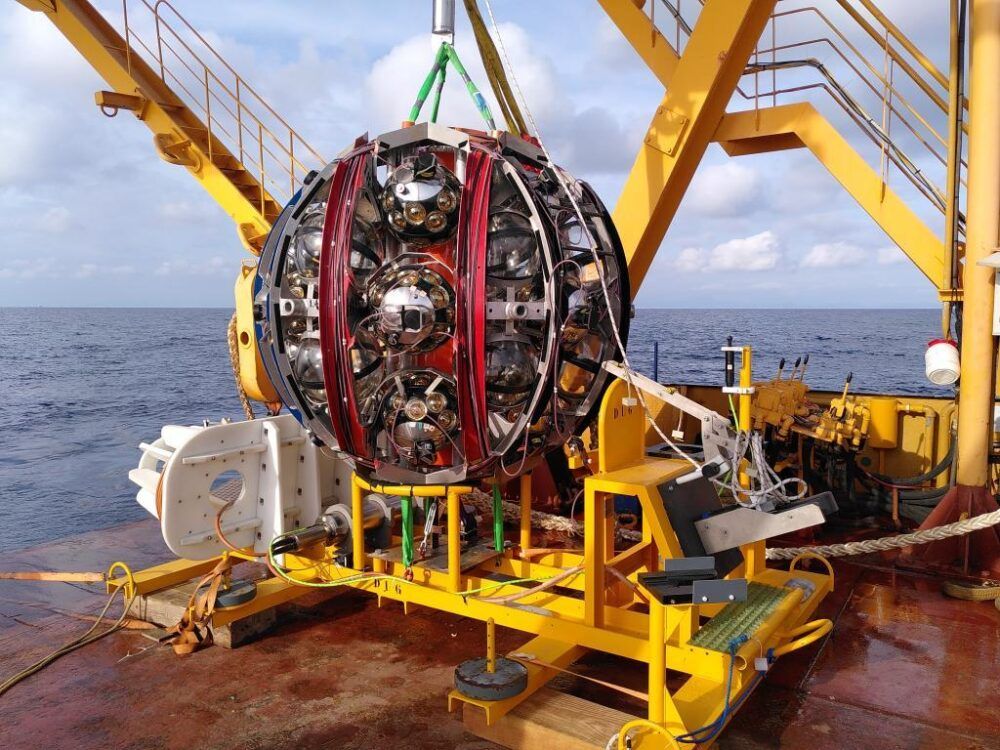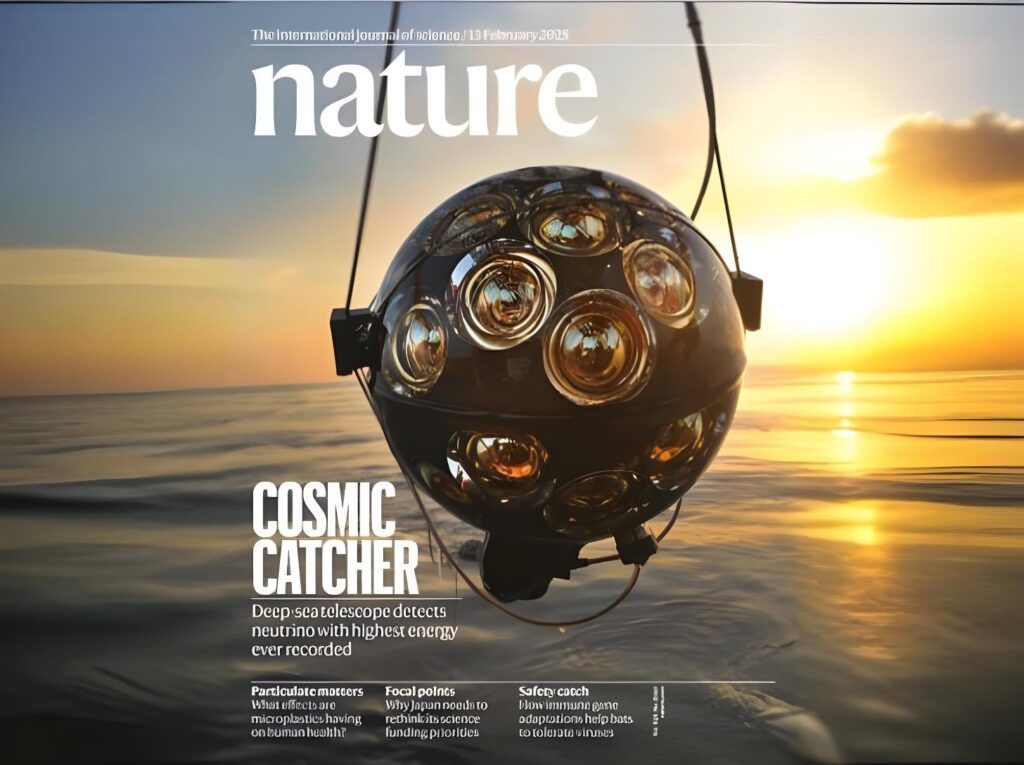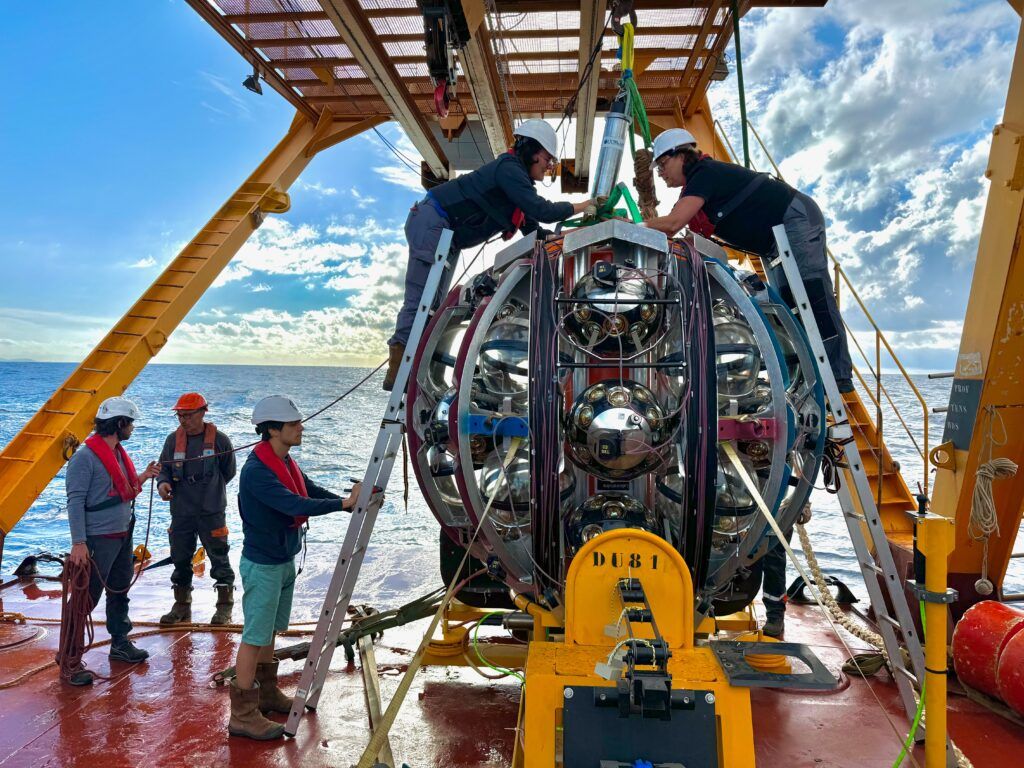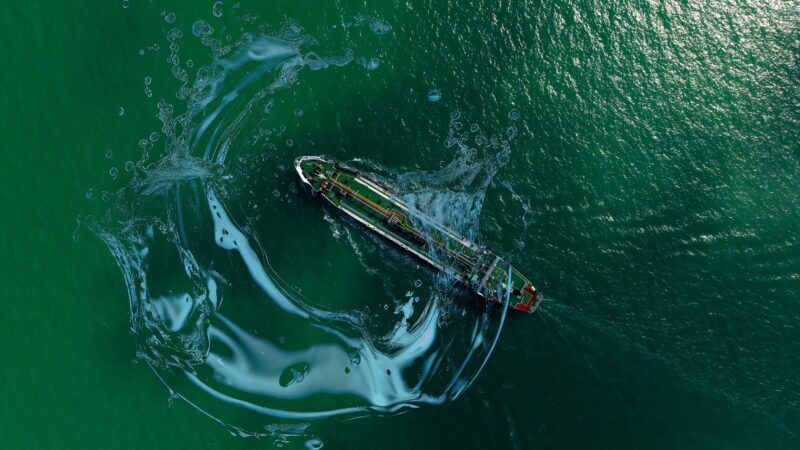
Hunting neutrinos at the bottom of the Mediterranean
The European KM3NeT telescope, located at a depth of 3,500 meters in the waters of the Mediterranean, is behind the detection of the highest energy neutrino ever observed. The finding shows the importance of the oceans for studying the universe and of international collaboration to further develop scientific knowledge linked to the seas.

A window to study the universe at the bottom of the sea
On February 13, 2023, the KM3NeT underwater neutrino telescope detected an extraordinary event, associated with a neutrino estimated to have an energy of 220,000 trillion electron volts. That is, 10,000 times more than the particles produced by the world's largest particle accelerator, the Large Hadron Collider of the European Organization for Nuclear Research (CERN).
After intense work, the KM3Net scientists were able to demonstrate that this was the most energetic neutrino observed by humans. And almost two years later, on February 12, 2025, the journal Nature dedicated its cover to it. The finding is especially relevant because it provides the first evidence that neutrinos of such high energies are produced in the universe, as explained by the CSIC.
- Neutrinos are elementary particles (particles that do not consist of smaller particles and are not known to have an internal structure) that arise from nuclear processes and are very difficult to detect from Earth, since they have no electric charge, their mass is tiny and they hardly interact with ordinary matter: they are not affected by the electromagnetic force, nor by the strong nuclear force, but by the weak nuclear and gravitational forces. Nevertheless, when detected, they can be a great source of information about the universe.
This particle was predicted by Wolfgang Pauli in 1930, but he doubted that it would be possible to detect them. It was in 1956 when Clyde Cowan and Frederick Reines experimentally demonstrated its existence.
“Neutrinos are special cosmic messengers, they provide us with unique information about the mechanisms involved in the most energetic phenomena and allow us to explore the farthest reaches of the universe,” explains Rosa Coniglione, deputy spokesperson for KM3NeT at the time of the detection and researcher at the National Institute of Nuclear Physics (INFN) in Italy, on the CSIC website.
Thus, the finding opens up new possibilities for the study of the universe. "We have a new discipline, which is astroparticle physics. Instead of being based on photons, as in classical astronomy, it measures other messengers, such as neutrinos or cosmic rays", Sara Rebecca Gozzini, member of the KM3NeT collaboration and distinguished researcher CIDEGENT (Plan GenT) at the Institute of Corpuscular Physics (IFIC), a joint center of the Spanish National Research Council and the University of Valencia (CSIC-UV), explains to PierNext.
"This astroparticle physics tries to do the same as classical astronomy, that is, to look for the source that has generated the messenger or from which the particles have been accelerated. With this neutrino, we are trying to find the source from which the particle itself has been accelerated," Gozzini explains.
"The fact that it has such a high energy is exceptional and may mean that this neutrino originated outside the Milky Way galaxy. The question remains open about its origin and acceleration, and to know what was the object so powerful that it could accelerate a particle up to 220,000 trillion electron volts," adds the IFIC researcher.

The importance of oceans for neutrino detection
Although they are the second most abundant elementary particle in the universe, neutrinos are very difficult to detect. For this reason, huge, very complex detectors are needed, located in very specific places, such as in the middle of the sea or in the ice of an Antarctic glacier.
"To detect a neutrino, there can be no direct sunlight or light pollution. That's why the instruments are in the deepest part of the ocean, in the part that remains completely dark. In addition, it is essential that they are in the middle of at least one cubic kilometer of a transparent element. If we take these characteristics into account, these telescopes can only be in the ice of an Antarctic glacier or in the waters of the sea," explains Gozzini.
The KM3NeT neutrino telescope is a large infrastructure that uses seawater as an interaction medium to detect neutrinos. This infrastructure consists of two sets of optical sensor detectors: ARCA, which detected the cosmic messenger in 2023, and ORCA. Although both are already operational, they are still under development.¡
The ARCA detector is located off the coast of Portopalo di Capo Passero, Sicily (Italy), at a depth of about 3,450 meters and connected to the Istituto Nazionale di Fisica Nucleare (INFN) shore station by an electro-optical cable. The ORCA detector, on the other hand, is located at a depth of about 2,450 meters off the coast of Toulon (France) and is optimized for the study of neutrino oscillations.
To make a project of this nature a reality, international collaboration is essential. Scientific groups from all over the world are participating in KM3NeT, including several Spanish ones, such as the Institute of Corpuscular Physics (IFIC) of the joint center of the Spanish National Research Council (CSIC). "A project like this is only possible thanks to the collaboration of universities and research centers, the support of many countries is needed. In this case, we are talking about 21 countries and 68 institutes or research centers, almost all of them European," says Gozzini.

Understanding the oceans: another major goal of KM3NeT
The finding of this neutrino detected by the KM3NeT telescope has highlighted the importance of the science surrounding the oceans in understanding the workings of the universe. In addition, the telescope's own technology is also being used to study what is happening at the bottom of the Mediterranean.
"It is a telescope that is oriented to marine science in several ways. The cameras allow us to measure the absorption coefficient of the water, which gives us information about its optical characteristics, and to continuously monitor parameters such as temperatures, direction and strength of the currents," Gozzini explains.
The system also has sonar to record the transit of large cetaceans, which contributes to research on their migrations and to a better understanding of how they are being affected by problems such as ship traffic, rising water temperatures and changes in ecosystems.
“In addition, with KM3NeT technology we can also measure anthropogenic noise in the depths and even the light generated by bioluminescent animals, to contribute to their study,” says Gozzini. “We could say that the oceans allow us to study the workings of the universe and, at the same time, the technology that makes this possible helps us to better understand what is happening at the bottom of the sea.”
In fact, as explained on the KM3NeT project website, the construction of underwater infrastructures to locate neutrino telescopes has led to improvements in the development of technology to study the deep sea.
These infrastructures are permanently connected to onshore laboratories, making them ideal places to install nodes, detectors and other scientific instruments. Scientific organizations, such as the European Multidisciplinary Seafloor and water column Observatory (EMSO), have been taking advantage of KM3NeT's seafloor infrastructure for years.
So, curiously, one of the most strategic places to understand the mysteries of the universe is the bottom of the sea. One more surprise of the oceans.




